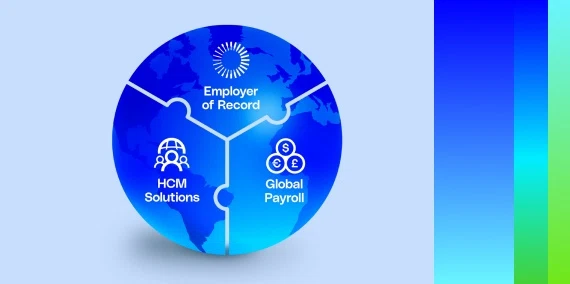We know that the future of work is global. But building global teams brings complexity as well as opportunity — especially when hiring and classifying contractors. From evolving country-specific labor laws to compensation policies, compliance regulations vary globally.
The risk of misclassification includes fines and penalties, back pay, and other legal repercussions. That’s why it’s essential to correctly classify contingent workers as contractors vs. full-time employees.
Don’t let the stress of compliance slow your plans for global success. Let’s explore how to navigate worker classification with reliable global employment products and an Employer of Record (EOR) solution in place.
What is worker misclassification?
Worker misclassification is the illegal practice of classifying an employee as an independent contractor. Whether a contractor or full-time employee, a worker’s legal employment status depends on a few key factors such as behavioral control, financial control, and how the worker and business perceive their working relationship.
Under the Fair Labor Standards Act (FLSA), a worker is entitled to minimum wage and overtime pay protection when there is an employment relationship covered under the FLSA.
In general, companies must withhold and pay income taxes, social security, unemployment taxes, and Medicare taxes for employees. If a business misclassifies an employee as a contractor, the organization can be held liable for employment taxes for that worker, including retroactive payments.
When it comes to payroll taxes, misclassifying workers as independent contractors adversely affects both workers and companies. Employees are impacted as their share of payroll taxes isn’t withheld, while companies neglect their obligation to pay their share of taxes, leading to compliance issues.
What are independent contractor misclassification risks?
Misclassifying contractors as employees comes with many risks. Misclassification of independent contractors and employees can be expensive and have legal consequences. Failure to follow local labor laws can lead to significant repercussions, including:
- Hefty fines.
- Back pay for unpaid taxes.
- Reputational damage that can affect worker retention and investor relationships.
- Criminal charges.
Top 6 ways to avoid contractor misclassification
In the United States alone, between 10% and 20% of employers misclassify at least one worker as an independent contractor. Since classification regulations differ across countries, make sure to examine the nuances of hiring independent contractors in your target region to ensure that your company properly handles compliance and classification.
If you’re not sure where to start, you’re not alone. Let’s explore a few ways to avoid misclassification risks.
1. Understand the key differences between employees vs. contractors.
If you’re hiring in the U.S., you should first learn the differences between W-2 employees and 1099 workers. A W-2 employee, or a common-law employee, is a U.S.-based worker who is part of a traditional employer-employee dynamic. Unlike a 1099 worker with independent contractor status and relative freedom, the employer controls how and where a W-2 employee completes their work.
Independent contractors are generally experts in niche areas, making them valuable assets for specialized projects. Additionally, this worker type gives companies the flexibility to hire workers when they’re needed most and prioritize resources.
Some other key differences between a contractor and employee include:

| Contractor | Employee |
| Operates independently on a per-project basis | Works full-time for one company |
| Is not part of the employer’s payroll | Part of the employer’s payroll |
| Does not receive benefits like health insurance or pension | Receives mandatory benefits |
| Has the flexibility to decide when and where they work | Follows employer’s guidelines and work schedule |
| Only given the information they require to complete a specific project | Requires lengthy onboarding and training processes |
| Hired for short- or long-term projects | Hired for long-term employment |
| Often has a specialized skill set | Generally has a broad, well-rounded skill set |

2. Get to know local classification and employment laws.
While there are clear benefits to hiring contractors, local laws can complicate the contractor classification process. Employee classification laws vary across countries and states. There are also country-specific rules on what qualifies a worker to be a contractor vs. an employee, as well as harsh penalties for failing to comply.
Master legal frameworks and key regulations related to global mobility, anti-discrimination, data protection, and intellectual property. Looking to expand your teams in Europe, the Middle East, or Africa? Explore our Global Guide to Hiring Contractors (EMEA). If you’re hiring independent contractors in Latin America, explore our Global Guide to Hiring Contractors in LATAM.
3. Draft compliant independent contractor agreements.
Defining the terms of service and details of the contractor/client relationship is key. Any contractor agreement must follow country-specific regulations and align with local contractor tax requirements. Be sure to specify the contractor’s responsibilities for the project, main duties, and scope of work.
With G-P Meridian Contractor™, you can generate compliant contracts, create automated invoices and custom reports, and track payments — in just a few clicks. G-P solves all of your hiring needs with one simple platform, so you’re always up to speed.
4. Keep detailed records.
Detailed records are key to demonstrating employees were not misclassified as independent contractors. Regularly update and maintain accurate records of the contractor’s job duties, payments transaction summaries, and any expenses that are reimbursed. In the event you need to counter any legal claims, you’ll have all the documentation you need, all in one place.
5. Stay on top of changes in the law — and the working relationship.
Employee classification laws and regulations change over time. Stay current on any legal changes that might affect how you classify workers. This will help you ensure compliance and avoid any legal issues. With a reliable EOR partner like G-P, you can maintain local compliance, and minimize risk, by letting us manage all the rules and regulatory changes for you.
Regularly reassess the contractor relationship to confirm it still aligns with your original service agreement. Update the legal agreement if the working dynamic changes.
6. Correctly transition contractors to employee status.
As your company grows, your hiring needs may change. If you are contemplating offering employment to a contingent worker, consider the contractor-to-employee transition process to avoid worker status confusion and mitigate misclassification risk.
Companies can face hefty fines that damage their reputation if the conversion process isn’t approached with legal expertise and proper preparation. The contractor will have access to more substantial benefits and steady work, but much of the autonomy they had as a contractor will shift to a managed, team-oriented experience. Likewise, the company is making a long-term financial commitment that should be carefully considered.
With G-P, you can easily convert contractors to full-time employees – anytime, anywhere. Our industry-leading, SaaS-based Global Growth Platform™ enables companies to manage their entire global workforce — including full-time employees and contractors — via one login.
Partner with G-P to power global growth today.
Need to hire a contractor for a key project? As an extension of our industry-leading global employment platform, G-P Meridian Contractor™ lets you hire and pay contractors in 180+ countries, quickly and easily, with built-in Wise fintech capabilities to deliver a new level of payment flexibility.
From contract generation to automated invoicing, our new self-service portal lets you start in minutes with simple, self-guided workflows.
Contact us today to learn more about how we can help you unlock the potential of global teams.












